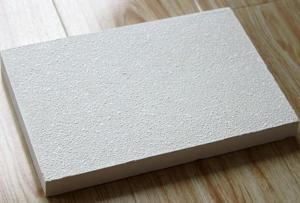Suspended ceilings, also known as drop ceilings or false ceilings, are a popular choice for many commercial and residential spaces. They offer a variety of benefits, including easy access to utilities, improved acoustics, and a customizable aesthetic. In this guide, well explore the world of suspended ceiling grid systems, diving into their components, installation process, and the reasons why theyre such a fantastic option for your space.
What Are Suspended Ceiling Grid Systems?
A suspended ceiling grid system is a network of intersecting metal tracks that create a framework for your ceiling tiles. These tracks are typically made from aluminum or steel and are designed to support the weight of the ceiling panels. The grid system allows for easy installation and replacement of panels, making it a versatile and practical choice for many spaces.
Components of a Suspended Ceiling Grid System
1. Main Tees: These are the primary horizontal tracks that run parallel to the longer walls of the room. They provide the main support for the grid system.
2. Cross Tees: These are the perpendicular tracks that intersect with the main tees, creating a grid pattern.
3. Angle Tees: Used at the rooms perimeter, these tracks connect the main and cross tees to the walls.
4. Suspended Ceiling Tiles: These panels fit into the grid system, covering the metal tracks and providing the finished ceiling appearance.
5. Accessories: Various accessories can be added to the grid system, such as light fixtures, air diffusers, and acoustic dampeners, to enhance the functionality of the space.
Benefits of Suspended Ceilings
1. Accessibility: One of the biggest advantages of suspended ceilings is the ease with which you can access the utilities above the ceiling, such as electrical wiring, plumbing, and HVAC systems.
2. Acoustics: Suspended ceilings can significantly improve the acoustic performance of a room, reducing echo and reverberation for a more pleasant sound environment.
3. Aesthetics: With a wide variety of ceiling tiles available, you can customize the look of your space to suit your style and needs.
4. Maintenance: Cleaning and maintenance are simplified with suspended ceilings, as you can easily remove and replace tiles as needed.
5. Energy Efficiency: By providing an additional layer between the room and the space above, suspended ceilings can help with insulation, reducing energy costs.
Types of Suspended Ceilings
1. Metal Grid Systems: Known for their durability and ease of installation, metal grid systems are a popular choice for commercial spaces.
2. Laminated Ceilings: Offering a more traditional look, laminated ceilings use a grid system with a different material composition.
3. Gypsum Board Systems: These systems use a drywall-like panel that provides a clean, finished look, often used in residential settings.
4. Acoustical Ceilings: Designed with sound absorption in mind, these ceilings are ideal for spaces where noise reduction is a priority.
Installation Process
1. Planning: Before you begin, measure the room and plan the layout of your grid system. Consider the location of doors, windows, and any obstructions.
2. Assembling the Grid: Start by installing the main tees, followed by the cross tees, ensuring they are level and secure.
3. Attaching the Grid to the Room: Use appropriate fasteners to attach the grid system to the rooms structural elements.
4. Installing the Ceiling Tiles: Once the grid is in place, you can start installing the ceiling tiles, making sure they fit snugly into the grid.
5. Adding Accessories: After the tiles are installed, add any necessary accessories, such as lights or air vents.
6. Final Touches: Inspect the installation for any gaps or misalignments and make adjustments as needed.
Maintenance and Care
Proper maintenance of your suspended ceiling is essential for its longevity and performance. Regularly check for any signs of wear or damage, and replace tiles as needed. Keep the ceiling clean by dusting and vacuuming to prevent the buildup of dirt and debris.
Why Choose a Suspended Ceiling?
Choosing a suspended ceiling for your space comes with numerous benefits. From the ease of installation and maintenance to the flexibility in design and functionality, suspended ceilings offer a practical and stylish solution for many spaces. Whether youre looking to improve acoustics, hide utilities, or simply update the look of your room, a suspended ceiling is a great choice.
In conclusion, suspended ceiling grid systems are a versatile and practical option for a variety of spaces. With their ease of installation, customizable aesthetics, and numerous benefits, theyre an excellent choice for both commercial and residential applications. So, if youre considering a ceiling upgrade or renovation, dont overlook the potential of a suspended ceiling grid system.

